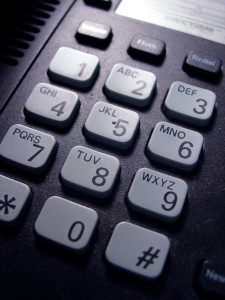
Quick Guide: Local Number Portability (LPN)
 Changing phone numbers can be very inconvenient for individuals and even more damaging for businesses. For decades the cost and friction of changing business cards, signage, advertising copy and more was a barrier to switching telephone carriers for businesses and an impediment to completion in the telecommunications market. Congress started to change this with The Telecommunications Act of 1996, which introduced Local Number Portability for wirelines. The FCC mandated that by November 24, 2003, wireless lines would also be portable.
Changing phone numbers can be very inconvenient for individuals and even more damaging for businesses. For decades the cost and friction of changing business cards, signage, advertising copy and more was a barrier to switching telephone carriers for businesses and an impediment to completion in the telecommunications market. Congress started to change this with The Telecommunications Act of 1996, which introduced Local Number Portability for wirelines. The FCC mandated that by November 24, 2003, wireless lines would also be portable.
What is Local Number Portability?
Under the Federal Communications Commission’s “local number portability” rules, you can switch telephone service providers for wireline, wireless, or SIP and keep your existing phone number if you remain in the same geographic area. (If you are moving from one geographic area to another, however, you may not be able to take your number with you.)
This gives people and businesses the flexibility to shop for the communication service that best fits their needs without worrying about the hassle or potential loss of business due to a new phone number.
How does LNP Work?
Local number porting is supported by the Location Routing Number (LRN) and the Local Service Management System (LSMS) database that is distributed to all exchange carriers. When a customer decides to change to a new service, a new LRN is assigned to the telephone number being ported. The LSMS is updated with the new LRN so that when a call is made, the carrier refers to its LSMS database to obtain the current LRN for the number dialed and the call is successfully connected.
LNP Tips
You may request service from a different company at any time. When changing companies:
- Do not terminate your service with your existing company before initiating new service with another company. Doing so removes your right to port the number.
- Contact the new company to start the process of porting your number. (In the case of SIP.US, this can be done through our control panel.)
- Provide the new company with your 10-digit phone number and any additional information required, which may include your customer account number and passcode, along with your five-digit zip code.
- Companies may charge their customers fees to recover the costs that they incur in providing number portability. (US charges a low one-time fee of $10 per number, with discounts for volume orders.)
- Companies may not refuse to port a number because a consumer has not paid for porting.
- Once you request service from a new company, your old company can’t refuse to port your number, even if you owe money for an outstanding balance or termination fee. (Of course, you are still obligated to pay any unpaid balances or fees, if applicable.)
- The length of the process varies based on the old carrier and the complexity of the port.
Customers considering the move from traditional phone lines to SIP trunking, do not need to be concerned about changing phone numbers. For a small fee, your numbers can be moved to your new SIP service and you can start enjoying the cost savings of SIP right away.


